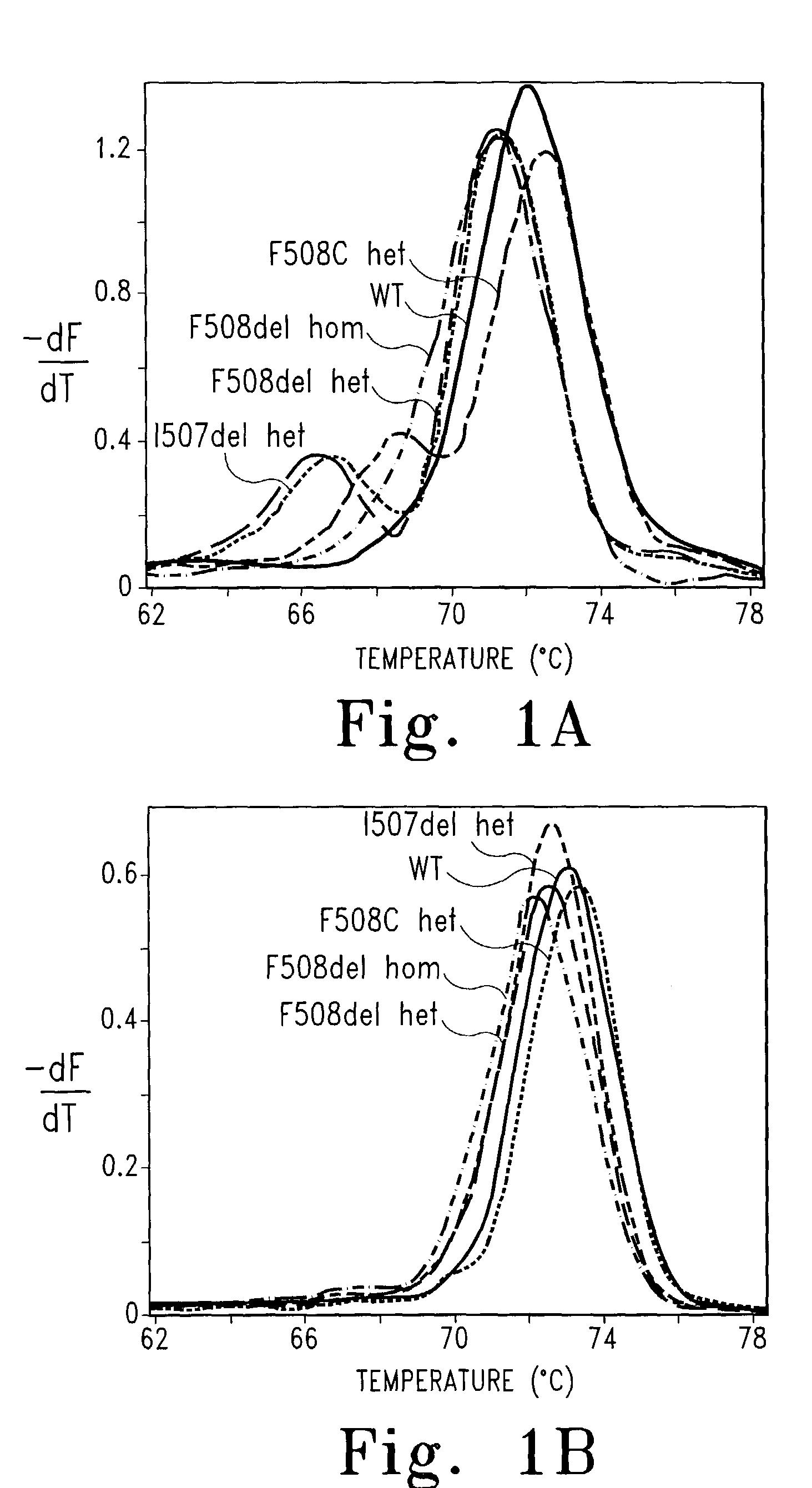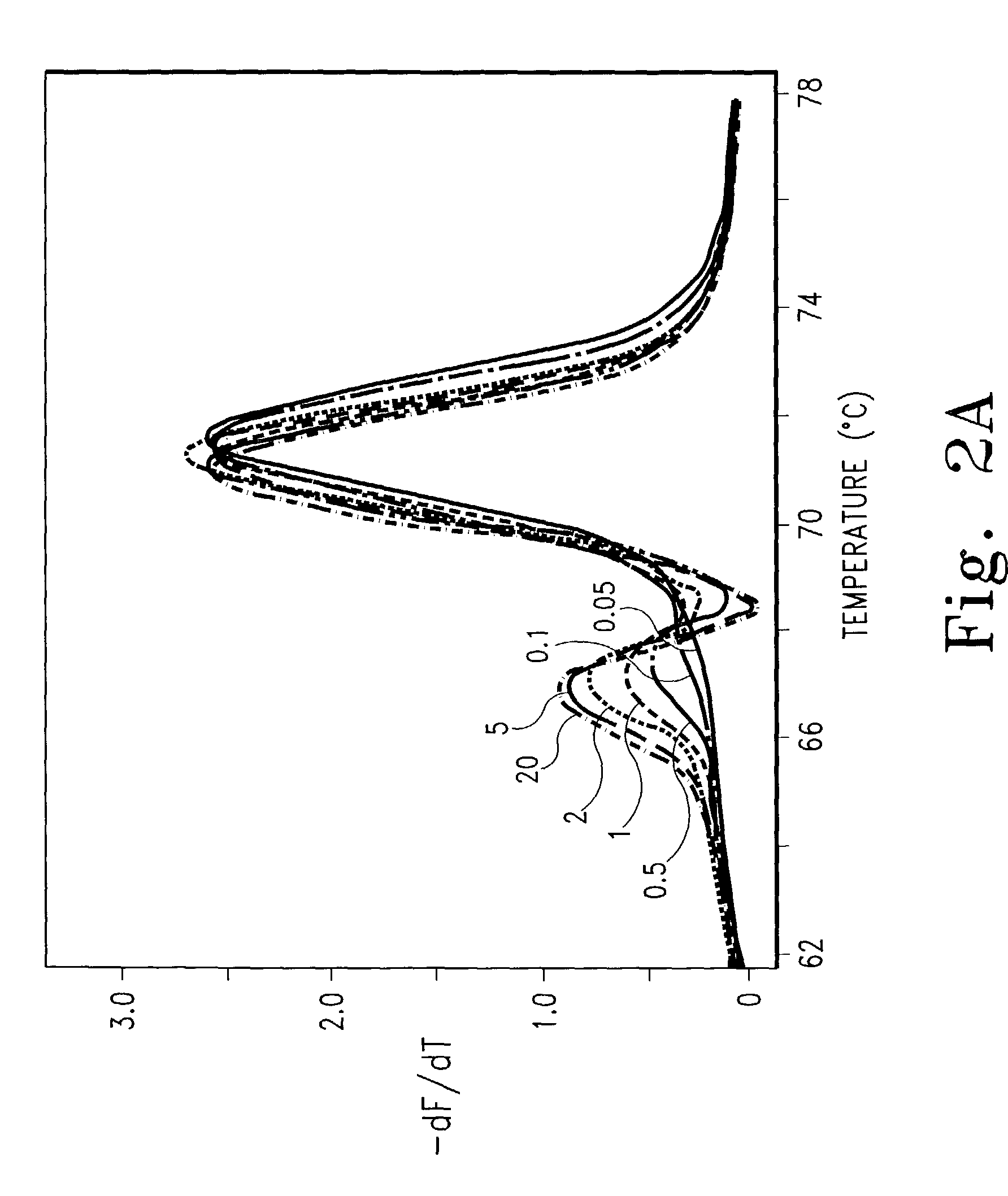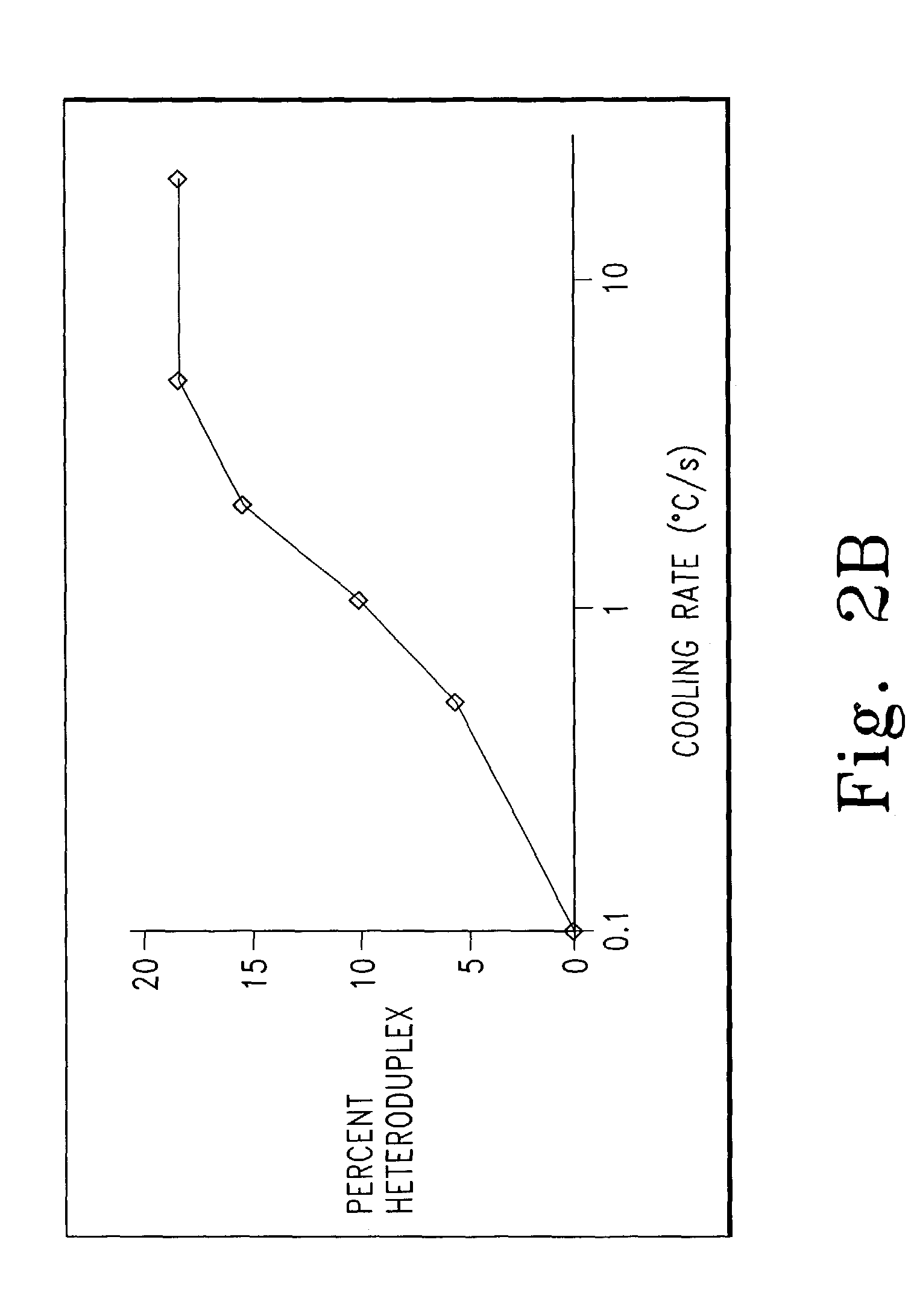Genotyping by amplicon melting curve analysis
a technology of amplicon and melting curve, applied in the direction of microorganism testing/measurement, biochemistry apparatus and processes, fermentation, etc., can solve the problems of limiting the possibility of real-time analysis, sample risk of pcr product carryover into subsequent reactions, and discriminating between small and larg
- Summary
- Abstract
- Description
- Claims
- Application Information
AI Technical Summary
Benefits of technology
Problems solved by technology
Method used
Image
Examples
examples
PCR Protocol
[0117]Labeled and unlabeled oligonucleotides were obtained from IT Biochem, Operon, or Synthegen. Purity was assessed by absorbance as previously described (Wittwer C. T., et al., Methods, 25:430-442, 2001). PCR was performed in 10 μl volumes in a Roche LightCycler with programmed transitions of 20° C. / sec unless otherwise indicated. The amplification mixture included 50 ng of genomic DNA as template, 200 uM of each dNTP, 0.4 U of KlenTaq1 polymerase (AB Peptides, St. Louis, Mo.), 88 ng of TaqStart antibody (ClonTech), 3 mM MgCl2, 50 mM Tris, pH 8.3, 500 μg / ml bovine serum albumin, and 0.5 μM primers unless indicated otherwise. When SYBR Green I was used as the indicator instead of labeled primers, a 1:30,000 final dilution from the Molecular Probes (Eugene, Oreg.) stock was used. Melting analysis was usually performed on the LightCycler immediately after cycling. In some cases, a high resolution melting curve was obtained by placing the capillary sample in a boiling wat...
PUM
| Property | Measurement | Unit |
|---|---|---|
| Fraction | aaaaa | aaaaa |
| Fraction | aaaaa | aaaaa |
| Molar density | aaaaa | aaaaa |
Abstract
Description
Claims
Application Information
 Login to View More
Login to View More - R&D
- Intellectual Property
- Life Sciences
- Materials
- Tech Scout
- Unparalleled Data Quality
- Higher Quality Content
- 60% Fewer Hallucinations
Browse by: Latest US Patents, China's latest patents, Technical Efficacy Thesaurus, Application Domain, Technology Topic, Popular Technical Reports.
© 2025 PatSnap. All rights reserved.Legal|Privacy policy|Modern Slavery Act Transparency Statement|Sitemap|About US| Contact US: help@patsnap.com



